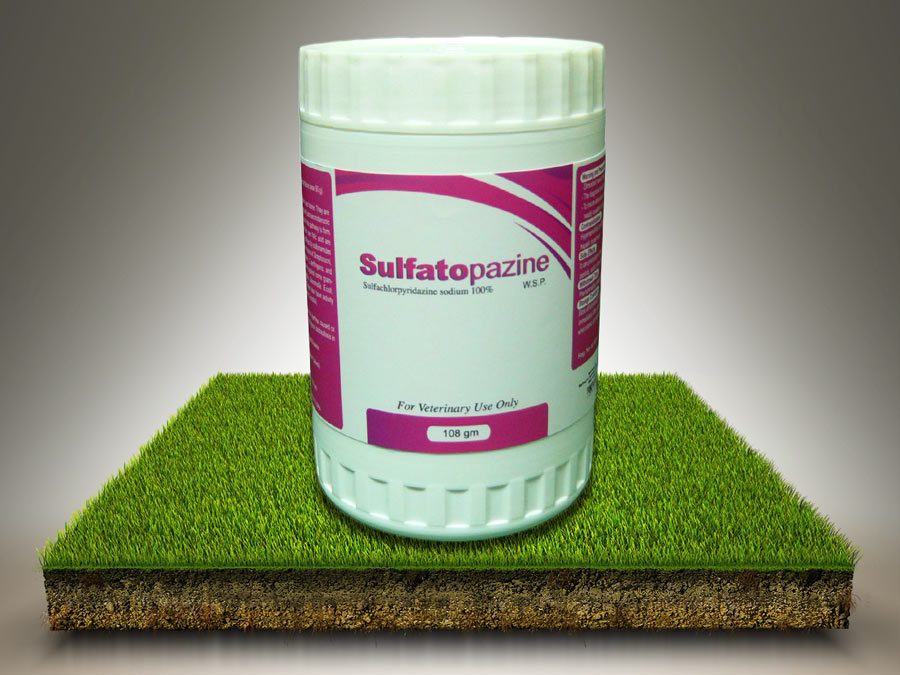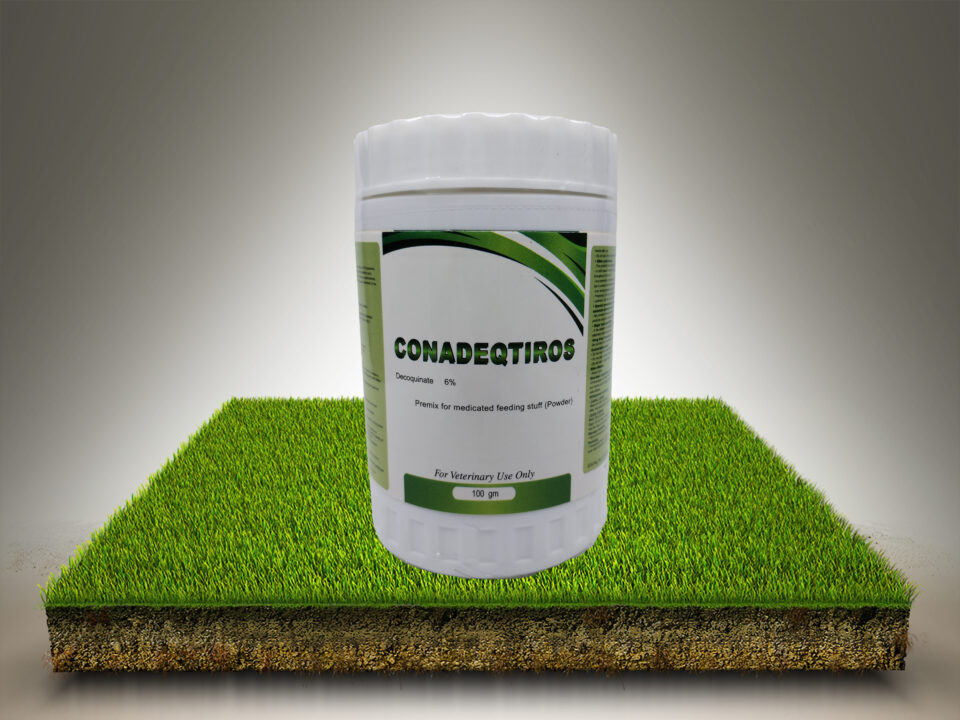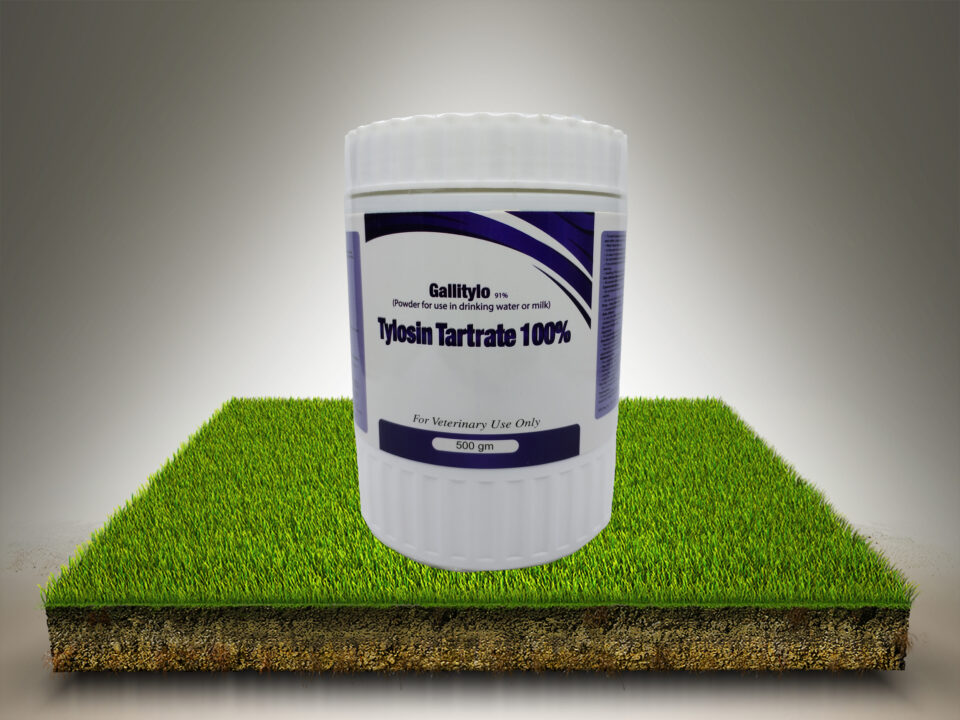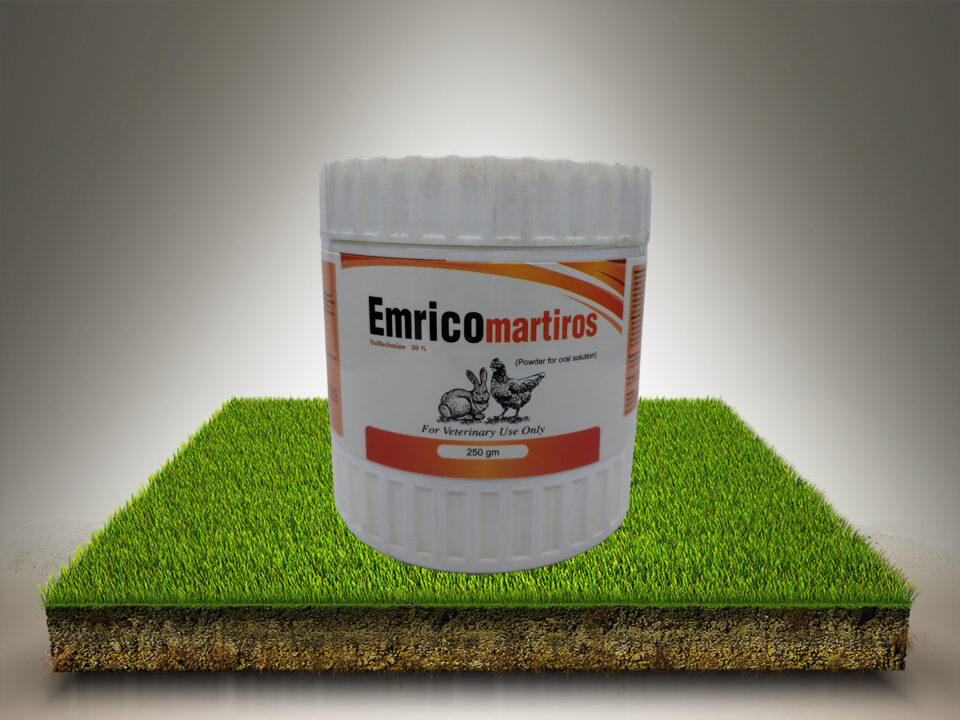
Spiradipate

Sultrimart
( W.S.P )
For Veterinary Use Only
Composition :
Each pack (54 g) contains:
Sulfachlorpyridazine sodium 54 g ( Eq.to sulfachlorpyridazine base 50 g)
Properties:
Sulfonamides are usually bacteriostatic agents when used alone. They are thought to prevent bacterial replication by competing with para-aminobenzoic acid (PABA) in the biosynthesis of tetrahydrofolic acid in the pathway to form folic acid. Only microorganisms that synthesize their own folic acid are affected by sulfas. Microorganisms that are usually affected by sulfonamides include some gram-positive bacteria, including some strains of Streptococci, Staphylococcus, Bacillus anthracis, Clostridium tetani, C.perfringens, and many strains of Nocardia. Sulfas have in vitro activity against some gram- negative species, including some strains of Shigella, Salmonella, E.coli, Klebsiella, Enterobacter, Pasturella and Proteus. Sulfas also have activity against some Rickettsia and protozoa ( Toxoplasma, Coccidia).
Indications:
Sulfachloropyridazine is indicated for the treatment of diarrhea caused or complicated by E.coli in calves less than one month of age or colibacillosis in swine.
Target Species:
Calves (less than one month of age) & swine.
Route of Administration:
Taken orally via drinking water (Swine) or milk replacer (Calves).
Dose for whole product:
A-Calves: 3.5 gm-5.5 gm/50 kg.b.wt.
Orally in milk-replacer in 2 divided doses daily for 3-5 days.
B-Pigs: 2.5 gm-4.5 gm/50 kg.b.wt.
Orally with drinking water in 2 divided doses daily for 3-5 days.
Warnings and precautions:
- – Diminshed renal or hepatic function , or urinary obstruction.
- The diagnosis should be reconfirmed if symptoms persist for 2 to 3 days.
- To insure adequate urine flow and to prevent crystalluria , water should be readily available to animals receiving Sulfachloropyridazine therapy.
Contra-indications
Hypersensitivity to sulfas, thiazides, or sulfonylurea agents; severe renal or hepatic impairment.
Adverse effects:
It can precipitate in the urine (Especially with high dosages for prolonged periods, acidic urine or highly concentrated urine).
Withdrawal periods:
Pre-ruminating calves: 7 days .
Pigs : 4 days.
Storage condition:
Store at temperature not exceeding 300 C in a dry place and used immediately after opening and used within 24 hours after reconstitution when stored at temperature not exceeding 300 C
Packaging:
White (HDPE) Plastic jars containing (LDPE) plastic sachet contain 20,21.6,27,55,108,162,216,270, 324,540,1080 gm W.S.P .with white (HDPE) plastic Caps with an outer label without Insert




